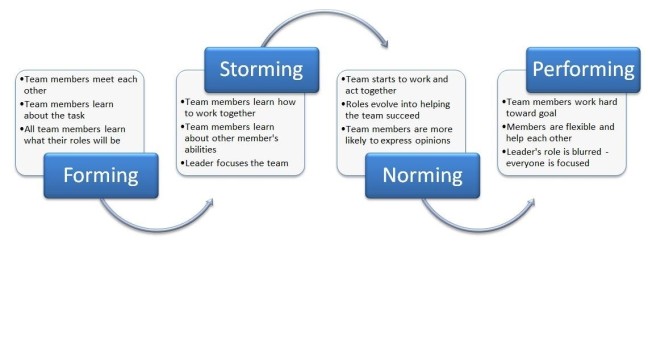
“Research has consistently shown that diverse teams produce better results, provided they are well led. The ability to bring together people from different backgrounds, disciplines, cultures, and generations and leverage all they have to offer, therefore, is a must-have for leaders” (Ibarra and Hansen 2011: 71).
At present, organisations have become extremely cosmopolitan due to identities, different cultures and lifestyles. Globalization and modern economic conditions require the organisations to interact closely with people from diverse backgrounds in order to be competitive within a global world. Therefore, workplace diversity has become an extremely important challenge for organization’s management. Leaders and business managers of today need to find the ways of working with multicultural teams for their evolving and changing. This blog will discuss the opportunities and challenges of the diverse team management, and present some effective strategies to manage diverse workforces.
‘People value their individuality and enjoy the right of self-expression. Membership of a group means giving up some of that personal identity. The real skill of management is therefore to make full use of people’s individuality for the mutual benefit of the group as a whole. Laurie J. Mullins
Managing diverse teams in organisation
Managing diversity means to manage people in terms of the employee’s and employers’ best interests. Today, many companies realize that properly managed diversity can provide organization’s creativity, effectiveness and successful development. It causes innovative ideas, which generate the creation of new products and services to meet the needs of the customers. Functioning with diverse team enhances the motivation in the organisation. Team diversity in the organisations influences on the better image and reputation of the company, and impacts on the extension of business. Moreover, management team diversity allows multiplying motivation and productivity due to the employees’ satisfaction in terms of fairy treatment, dignity and equality at workplaces (Green 2015). Many organisations use diversity initiative for high recruitment of the workforce and their retention (Esty 1995). Globalization has connected heterogeneous teams capable to create solutions for markets extension.
Tuckman’s Model
In order to face challenges and solve problems in diversity teams management the Tuckman’s Model is used for developing teams. It provides such stages as forming, norming, storming and performing to become one team (Laurie 2015).

Bass’ Transformational Leadership Theory.
“Research evidence clearly shows that groups led by transformational leaders have higher levels of performance and satisfaction than groups led by other types of leaders” Ronald E. Riggio
Another model, which is called transformational leadership model, was created by Dr. Bernard Bass and includes 4 components, such as idealised influence, individualized consideration, intellectual stimulation and inspirational motivation (See Figure 2) (EBA 2016). According to Bass, transformational leadership is based on the leader’s impact on followers.

Diversity faces different challenges
In managing diverse teams challenges are inevitable. Managers have to overcome such difficulties as the loose of personnel and work productivity and create a successful diverse workforce (Green 2002). Among challengers for managers there also legal actions against the organisation and complaints (Devoe 1999).
Diversity can be the reason of open conflicts and chaos, in case if there are misunderstanding, discrimination, prejudice and mistrust in the organization. Unfortunately, it happens when the organization becomes more diverse and employees are not able to work effectively together. Long existed organization culture can resist prospering and surviving of the diversity teams in corporation. Furthermore, most of communication in the organisation may be segmental, i.e. between people with similar backgrounds. This situation may be the reason of subgroup separation and “perceiving other groups as a threat to their values” (Garden 2008). With this in mind, the leader needs to explain their common task, making the team members to be involved to the project, better communicate and feel the significance of each other (Knippenberg 2013).
The examples of best companies, successfully managed diversity teams
Best business companies successfully work with diverse workforces and have financial benefits. Thus, in Google about 36 percent minority people and 33 percent of women work and this company is in the first place according to the rank “Work for fortune 500 magazines”. (fortune 2016).
Edward Jones and Starbucks employ about 60 percent women and have fourth and seventh position respectively in the same rating.
Procter & Gamble (P&G) has been a leader of people’ development from diverse backgrounds more than 12 years. The diversity mission of the company is “Everyone valued. Everyone included. Everyone performing at their peak”. (Lafley 2016).

Chairman, President and CEO of P&G says: “At P&G, our focus is on creating brands and products that improve the lives of the world’s consumers. When we truly leverage the strategic value of diversity and inclusion, we understand consumers better, we innovate more consistently, and we develop each other and ourselves much better, much faster, and much stronger.”
This mission is fulfilled by senior executives, cross-cultural mentors and leaders through marketing, communication and development of multicultural employee resource groups. Moreover, P&G is also a constant leader in the work with disable people, supplying multicultural marketing and managing diversity teams.
Recommendations for successful diversity teams managing
Leaders and managers of the organisations have to learn certain skills about managing diversity in the workplace for successful business development (Flagg 2002).This knowledge includes:
- The understanding of discrimination and its consequences.
- Knowledge of Laws and regulations.
- Recognition of their own cultural prejudices (Koonce 2001).
- The desire, in case of necessity to change the organisation (Koonce 2001).
- Creation of a work environment and Roosevelt (2001).
- Providing access to opportunities and information; equal employment and affirmative action (Losyk 1996).
Managing diverse teams as a reflection of the increasing process of globalization is extremely beneficial to both organizations and employers. If diversity managed in a good way in organisation, it increases its creativity and productivity. In case, if diversity is managed imperfectly, the organisation will face more difficult problems in communication, interpersonal conflicts, working relationships, as well as work productivity.
References
Bass, M. & Riggio, E. (2008) Transformational Leadership. Mahwah, New Jersey: Lawrence Erlbaum Associates, Inc.
Devoe, D. (1999( Managing a diverse workforce. San Mateo, CA: InfoWorld Media Group.
EBA (2016) Transformational Leadership: Leading Change Through Growth and Empowerment [online] available from <http://www.educational-business-articles.com/transformational-leadership/> [20 February 2016]
Esty, K. & M. S. (1995) Workplace diversity. A manager’s guide to solving problems and turning diversity into a competitive advantage. Avon, MA: Adams Media Corporation [online] available from <https://edis.ifas.ufl.edu/pdffiles/HR/HR02200.pdf > [22 February 2016]
Fortune, (2016) 100 Best Companies to Work For [online] available from <http://fortune.com/best-companies/> [22 February 2016]
Flagg, A. (2002) Managing diverse workgroups successfully. United Behavioral Health.
Gardenswartz L. & Rowe A. (2008) Diverse Teams at Work : Capitalizing on the Power of Diversity’. Virginia : Society for Human Resource Management
Green K. (2015) ‘Diversity in the Workplace : Benefits, Challenges, and the Required Managerial Tools’. Food and Resource Economics Department, UF/IFAS Extension
Knippenberg D. (2013) Diversity mindsets and the performance of diverse teams’. Organizational Behaviour and Human Decisions Processes 121, 183-193
Koonce, R. (2001) “Redefining diversity: It’s not just the right thing to do; it also makes good business sense.” Training and Development.
Laurie J. Mullins (2013) Management and Organisational Behaviour 134
Lafley, (2016) Procter Gamble [online] available from <http://www.diversityinc.com/procter-gamble/A.G.Lafley [22 February 2016]
Loysk, B. (1996). Managing a changing workforce: Achieving outstanding service with today’s employees. Davie, FL: Workplace Trends Publishing.
Riggio, R, (2009) Are you a transformational leader. Psychology Today [online] available from <http://blogs.psychologytoday.com/blog/cutting-edge-leadership/200903/are-you-transformational-leader> [23 February 2016]
Roosevelt, T. (2001) Elements of a successful diversity process. The American Institute for Managing Diversity. Society for Human Resource Management
Hello! Well done! I like it. I would like to know how to create the perfect diverse team? I am asking, because it seems very difficult to me. Thank you in advance.
LikeLike
Hi! I am very thankful for your comments. Yes, I agree with you, it’s not so easy to create a perfect team with people, who differ in backgrounds, gender and ages with wide ranging aspirations and experience, In my opinion, to achieve this aim, it is necessary to have an open-door policy, tackle conflict and build a common workplace culture, communicate regularly to unify the team, treat others as you would like to be treated. Step by step if you wish to have a perfect diverse team, you should take into account these activities.
Thank you and Iwish you good luck!
LikeLike
Hello! I have a question. Does the diversity team influence on the progress of the common activity?
LikeLike
Hi! Many thanks for your interest. This question is very interesting. To my mind, diversity team plays an effective role in the development of the organisation and progress of the common activity. However, inadequate leadership and guidance could cause an organisation low productivity. For this reason there must be regular improvement in ways to effectively manage a diverse workforce as the world keeps advancing. I also think that big organisations are more passionate about diversifying their team and consider its implementation as a norm and continuously strive to improve diversity management, whereas small organisations see it as a choice and evitable when they feel it a burden or cannot effectively manage it.
LikeLike
Hi Assiya! I consider this theme is very useful in multicultural world. What difficulties can a leader face in managing diverse teams?
LikeLiked by 1 person
Hello! Thank you very much for your interest. As I have already mentioned in this blog, a leader can face some challenges in managing diverse teams, such as loose of personnel and work productivity, open conflicts and chaos along with misunderstanding, discrimination, prejudice and mistrust in the organization.
LikeLike
Hello, so great to read your post! I work with diverse team and have some difficulties. Sometimes, it seems to me that people do not trust me and I need your advice. What do you suggest? Thank you very much.
LikeLike
Hello! Do not dispair please. It is not easy to manage diverse team, but if you are patient and want to reach your goals, you will be able to get excellent results and solve any problems. I think. that it takes time to build employees’ trust. To build trust, you need to be honest, open and generous with your communication. Even when your employees trust you, they won’t change unless you give them a compelling reason to change. If you miss this opportunity, employees will fabricate their own reasons which are usually negative and disruptive to the change. I wish you good luck in realising this difficult task.
Thank you very much!
LikeLike
It’s so interesting to read your post. I’ve got much important information about managing diverse teams. I want to know your opinion, what teams are more creative homogenious or diverse? Thank you.
LikeLike
Hi! Thank you for your comments. I think, that a group of people with diverse individual expertise would be better and more creative than a homogeneous group. It is also related to solving complex problems. This happens not only because people with different backgrounds bring new information.
In diverse teams it is better to interact with individuals, to anticipate alternative viewpoints and to expect that reaching consensus will take effort.
LikeLike